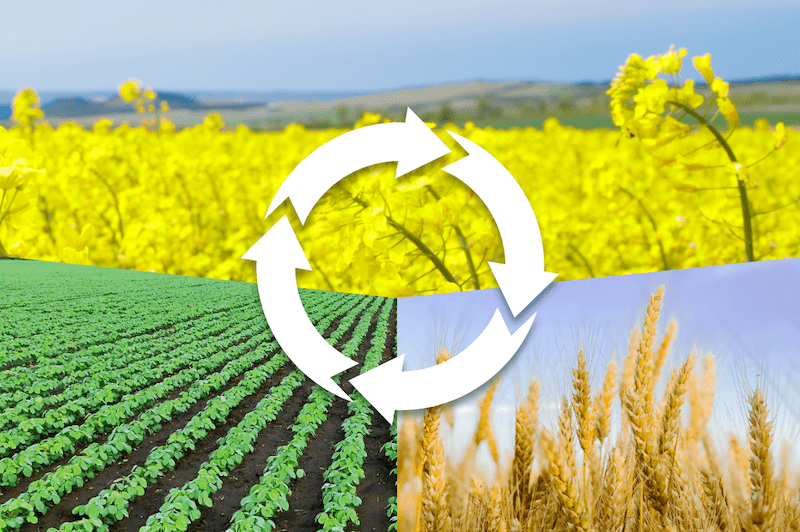
The technique of crop rotation has been used by farmers for thousands of years to get more out of their plants. Researchers have shown by rotating specific crops on the same plot of land improves the structure of the soil, builds subterranean ecosystems, grows bigger, better plants, and naturally repels most pests.
Farmers have been rotating crops for thousands of years to improve soil health, increase crop yields, and reduce pest pressure. The practice involves planting different crops in a specific sequence or rotation on the same land over several seasons or years.
The earliest known examples of crop rotation can be found in ancient China and Rome, where farmers practiced alternating fields between legumes and cereals. It was discovered that these crops fix nitrogen in the soil, which helped to maintain soil fertility and increase crop yields. In Europe, crop rotation became popular during the Middle Ages, with a typical rotation consisting of a cereal crop, followed by a legume, and then fallow.
Today, farmers rotate their crops for the same reasons, particularly when is comes to improve and maintain soil health. By rotating crops, farmers can avoid the use of synthetic fertilizers, which is better for both the soil and the environment. Crops like deep-rooted grasses, alfalfa , and buckwheat, for example, can be planted to help break up soil compaction, while others like clover and sunflower suppress weeds and reduce soil erosion.
Rotating crops also helps to reduce pest pressure. By planting different crops each season, farmers can disrupt the life cycle of pests and prevent the buildup of insect populations. This is especially important for insect pests that can damage crops and reduce yields. Another benefit of crop rotation is improved yield. Various crops possess unique growth patterns and nutritional needs. By rotating crops, farmers can establish the perfect conditions for each crop to flourish, boost yields. and enhance crop quality.
Crop rotation is also better for the environment as a whole. Farmers can lower their carbon footprint by rotating crops to reduce the use of artificial fertilizers, man-made soil conditioners, and pesticides. In addition, rotating crops can help preserve biodiversity, as different crops provide habitats for different species of plants, animals, and insects beneficial to plants.

There are several different ways to rotate crops, including crop sequencing, mixed cropping, intercropping, cover cropping, and fallowing.
Follow crops can be an important aspect of crop rotation. Follow crops refer to the practice of planting one crop after another season to season, without leaving any fallow periods. This approach can be particularly useful in small gardens where space is limited, as it allows for a more efficient use of raised garden beds.
However, it is important to carefully plan follow crops to ensure that soil nutrients are not depleted. This means choosing crops with different nutrient requirements and avoiding planting the same crop in the same spot year after year. For example, following a crop that fixes nitrogen to its roots, like beans or peas, with a crop that deposits phosphorus into the soil once it is turned under, like tomatoes or peppers, can help maintain soil fertility.
Follow crops can also help reduce weed pressure, as different crops can have different root structures and compete with weeds in different ways. Additionally, planting follow crops can help minimize disease and pest infestations, as pests that target one crop are less likely to survive when a different crop is planted in its place.
Follow cropping is a simple and effective way for home gardeners to improve soil health, help their plants grow more, and naturally repel pests. By carefully planning which crops to grow in successive seasons, gardeners can enjoy a more productive and diverse garden while minimizing their environmental impact. By rotating nitrogen-fixing crops with heavy feeders, gardeners can reduce if not eliminate the need for synthetic fertilizers. This can save money and reduce the environmental impact of gardening. Pests and diseases tend to build up in soil where the same crop is grown year after year. By rotating crops, gardeners can disrupt pest and disease cycles and reduce the need for pesticides.
Article Posted Oct 23, 2023